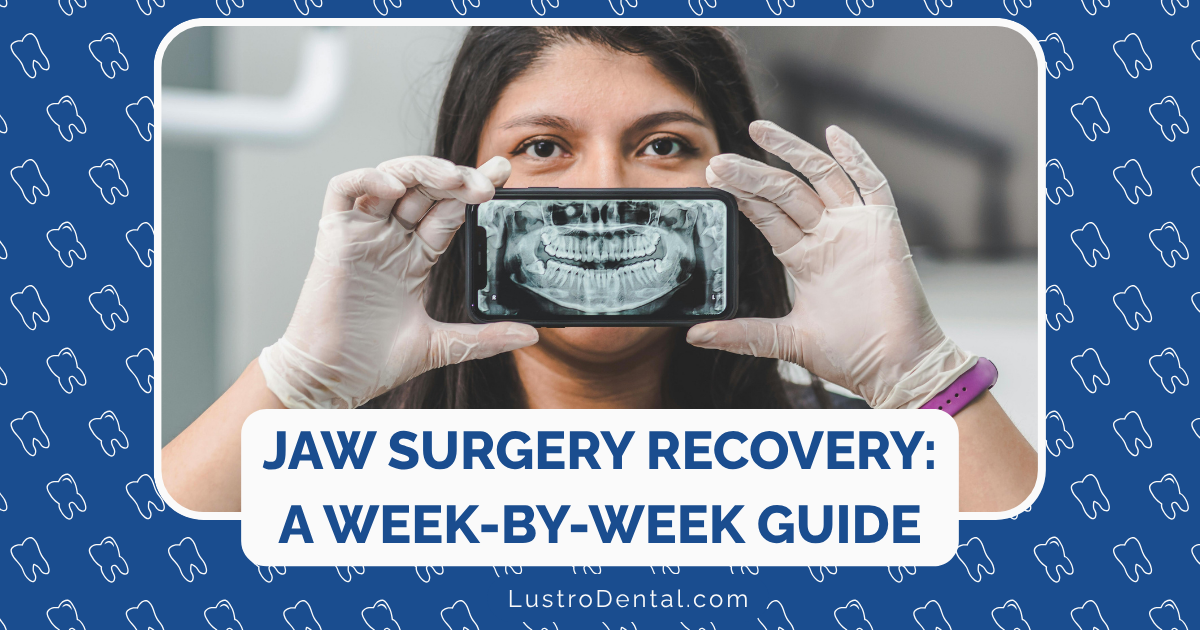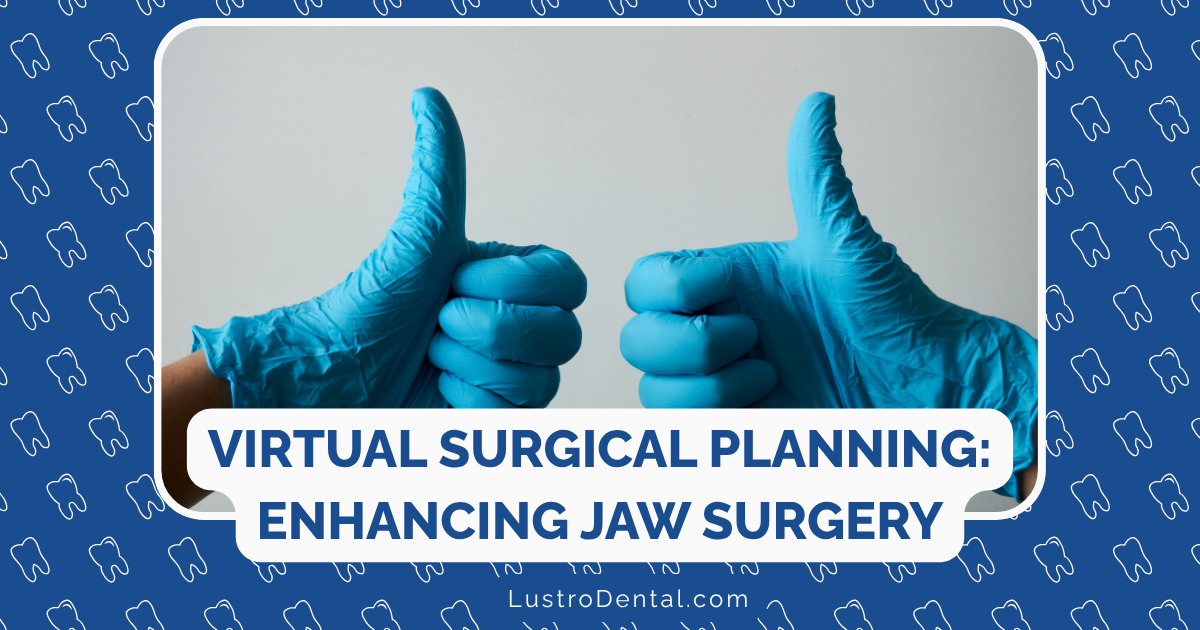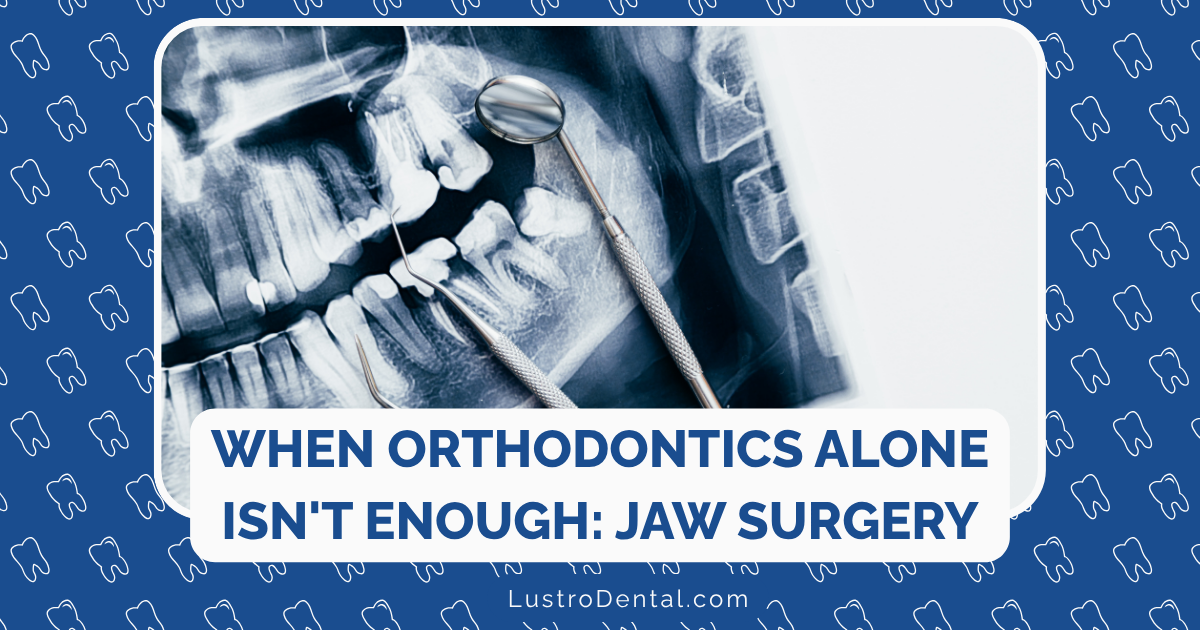Caring for Braces: Essential Products and Techniques for Optimal Results

Getting braces is an investment in your future smile—but that investment requires proper maintenance to yield the best returns. As someone who’s guided thousands of orthodontic patients through their treatment journeys, I’ve seen firsthand how the right care routine can make the difference between mediocre and magnificent results.
The reality is that braces create numerous tiny spaces where food particles and plaque can hide, potentially leading to problems like cavities, gum disease, and those dreaded white spots that can appear when braces come off. The good news? With the right tools and techniques, you can keep your teeth and braces spotless, ensuring that when those brackets finally come off, your smile is everything you hoped for.
In this comprehensive guide, I’ll walk you through everything you need to know about caring for your braces, from must-have products to step-by-step cleaning techniques that will help you achieve optimal results from your orthodontic treatment.
Why Braces Care Matters: The Stakes Are High
Before diving into specific products and techniques, it’s important to understand why proper braces care is so crucial:
Preventing White Spot Lesions
According to a study published in the American Journal of Orthodontics and Dentofacial Orthopedics, nearly 50% of patients develop at least one white spot lesion during orthodontic treatment. These permanent discolorations occur when acids from plaque demineralize the tooth enamel around brackets.
Avoiding Treatment Delays
Poor oral hygiene can lead to complications that extend your treatment time. The Journal of Clinical Orthodontics reports that patients with inadequate oral hygiene often need an average of 3-6 months of additional treatment time.
Protecting Your Investment
With the average cost of braces ranging from $3,000 to $7,000, protecting your investment through proper care just makes financial sense.
Essential Braces Care Products: Your Orthodontic Arsenal
The right tools make all the difference when it comes to keeping your braces clean. Here’s what you need in your daily care kit:
1. Orthodontic Toothbrushes
What to Look For:
- V-shaped bristle pattern to clean around brackets
- Soft to medium bristles to protect gums and enamel
- Compact head to reach back teeth
Top Recommendations for 2025:
- Oral-B Ortho Soft Toothbrush
- GUM Orthodontic Toothbrush
- Colgate Ortho Toothbrush
Expert Tip: “Replace your toothbrush every 6-8 weeks when you have braces, not the standard 3 months,” advises Dr. Jennifer Lee, orthodontist at Clear Smile Orthodontics. “The brackets wear down bristles much faster than normal.”
2. Electric Toothbrushes with Orthodontic Heads
What to Look For:
- Orthodontic brush head designed for braces
- Pressure sensor to prevent brushing too hard
- Timer function for thorough cleaning
Top Recommendations for 2025:
- Oral-B iO Series with Ortho Brush Head
- Philips Sonicare DiamondClean with Ortho Head
- Burst Sonic with Ortho Attachment
Research Insight: A 2023 study in the Journal of Dental Research found that electric toothbrushes with specialized orthodontic heads removed up to 27% more plaque around brackets compared to manual brushing.
3. Water Flossers
What to Look For:
- Orthodontic tip specifically designed for braces
- Multiple pressure settings (start low and work up)
- Adequate water reservoir for full-mouth cleaning
Top Recommendations for 2025:
- Waterpik Aquarius Water Flosser
- Philips Sonicare Power Flosser
- Burst Water Flosser
User Experience: “My water flosser changed everything about my braces experience,” shares Michael, a 28-year-old patient. “I went from dreading flossing to actually looking forward to that clean feeling after using it.”
4. Interdental Brushes
What to Look For:
- Various sizes for different spaces
- Flexible wire core that won’t damage braces
- Reusable design with replaceable heads
Top Recommendations for 2025:
- GUM Proxabrush Go-Betweens
- TePe Interdental Brushes
- Oral-B Interdental Brushes
Orthodontist Insight: “Interdental brushes are often overlooked, but they’re absolutely essential for cleaning around brackets and under wires,” notes Dr. Michael Chen of Advanced Orthodontic Solutions. “I recommend keeping them in your pocket, purse, or backpack for on-the-go cleaning.”
5. Floss Threaders and Orthodontic Floss
What to Look For:
- Rigid enough to thread under wires
- Waxed floss to prevent shredding
- Comfortable handle for easy manipulation
Top Recommendations for 2025:
- Platypus Orthodontic Flossers
- GUM EasyThread Floss
- Oral-B Super Floss
Technique Tip: “Thread the floss under the main wire, then wrap it around your fingers in a C-shape to hug each tooth surface,” recommends dental hygienist Sarah Johnson.
6. Orthodontic Wax
What to Look For:
- Clear or tooth-colored for discretion
- Easy to apply without sticking to fingers
- Vitamin E or aloe vera for added comfort
Top Recommendations for 2025:
- OrthoDots CLEAR (silicon-based alternative to traditional wax)
- GUM Orthodontic Wax with Vitamin E
- Gishy Goo (longer-lasting silicone alternative)
Application Tip: “Roll the wax into a small ball and warm it between your fingers before applying to make it stick better,” suggests orthodontic assistant Maria Rodriguez.
7. Fluoride Mouthwash and Toothpaste
What to Look For:
- Alcohol-free formula to prevent irritation
- High fluoride content for enamel protection
- Anti-gingivitis properties
Top Recommendations for 2025:
- CloSYS Alcohol-Free Mouthwash
- Colgate PreviDent 5000 Toothpaste (prescription strength)
- ACT Braces Care Anticavity Fluoride Mouthwash
Research Insight: A 2024 study in the Journal of Clinical Dentistry found that using a high-fluoride toothpaste during orthodontic treatment reduced white spot lesions by up to 31%.
8. Travel Orthodontic Kit
What to Look For:
- Compact case that fits in pocket or purse
- Essential tools for on-the-go cleaning
- Discreet design for public use
Top Recommendations for 2025:
- Oral-B Ortho Essentials Travel Kit
- GUM Travel Orthodontic Kit
- Colgate Braces Care To-Go Pack
Expert Tip: “Always keep a travel kit in your backpack, purse, or car,” advises Dr. Lisa Patel. “The best oral hygiene routine is the one you actually follow, and convenience is key.”
Essential Techniques: The How-To of Braces Care
Having the right tools is only half the battle—you also need to know how to use them effectively. Here’s your step-by-step guide to a thorough braces cleaning routine:
Daily Brushing Technique
Step 1: Rinse thoroughly Before brushing, rinse with water to dislodge loose food particles.
Step 2: Brush at a 45-degree angle Position your toothbrush at a 45-degree angle to the gumline, using gentle circular motions.
Step 3: Clean above brackets Angle the brush downward to clean the area above each bracket.
Step 4: Clean below brackets Angle the brush upward to clean the area below each bracket.
Step 5: Clean the brackets themselves Brush directly at the brackets to remove any remaining debris.
Step 6: Clean the chewing surfaces Use back-and-forth motions on the chewing surfaces of your teeth.
Step 7: Brush your tongue and gums Don’t forget these areas, which harbor bacteria that can cause bad breath and gum disease.
Timing: Brush for at least 2 minutes, spending 30 seconds on each quadrant of your mouth. With braces, consider extending this to 3 minutes for thorough cleaning.
Frequency: Brush after every meal and snack, or at minimum, three times daily.
Water Flossing Technique
Step 1: Fill the reservoir Use warm water and, if recommended by your orthodontist, add a small amount of alcohol-free mouthwash.
Step 2: Start with low pressure Begin with the lowest pressure setting and increase gradually as you become comfortable.
Step 3: Close lips slightly Allow water to flow out naturally into the sink while keeping lips partially closed to prevent splashing.
Step 4: Aim at the gumline Position the tip at a 90-degree angle to the gumline, not directly at the brackets.
Step 5: Pause between teeth Spend about 3-5 seconds between each tooth, focusing on the gumline and around brackets.
Step 6: Follow a pattern Start at the back of one arch and work your way around systematically.
Frequency: Use once daily, ideally before bedtime after brushing.
Interdental Brush Technique
Step 1: Select the right size The brush should fit snugly but not forcefully between teeth or around brackets.
Step 2: Insert gently Slide the brush between the wire and teeth or between brackets.
Step 3: Use a back-and-forth motion Gently move the brush back and forth a few times in each space.
Step 4: Rinse the brush frequently This prevents transferring debris from one area to another.
Frequency: Use after meals or at least once daily, especially in areas prone to trapping food.
Traditional Flossing with Braces
Step 1: Use a floss threader Thread about 18 inches of waxed floss through the eye of the threader.
Step 2: Insert under the wire Carefully pass the threader under the main archwire between two teeth.
Step 3: Grasp the floss Once through, hold both ends of the floss and wrap it around your fingers.
Step 4: Use a C-shape motion Curve the floss around each tooth in a C-shape, gently moving up and down.
Step 5: Be gentle near the gums Avoid snapping the floss into the gums, which can cause irritation.
Frequency: Floss at least once daily, preferably before bedtime.
Special Situations: Adapting Your Care Routine
After Adjustment Appointments
Your teeth may feel tender for 2-3 days after adjustments. During this time:
- Use warm salt water rinses (1/2 teaspoon salt in 8 oz warm water) to reduce inflammation
- Opt for softer bristles if your regular toothbrush causes discomfort
- Be extra gentle but thorough with your cleaning routine
- Consider using orthodontic pain relief products like OrthoDots CLEAR with benzocaine
Managing Emergencies
For common braces emergencies:
Poking Wire:
- Try pushing it away with the eraser end of a pencil
- Cover with orthodontic wax
- If persistent, call your orthodontist
Loose Bracket:
- If still attached to the wire, leave it in place and cover with wax
- If completely detached, save it and bring to your next appointment
- Contact your orthodontist to determine if an emergency visit is needed
Lost Elastic:
- Don’t double up at the next placement
- Call your orthodontist for guidance
- Continue your oral hygiene routine as normal
Braces Care While Traveling
Maintain your routine even on the road:
- Pack a travel kit with essentials: travel toothbrush, interdental brushes, wax, floss threaders
- Consider a portable water flosser if you’ll be away for an extended period
- Take along extra wax and elastics for emergencies
- Know how to find orthodontic care at your destination if needed
Common Problems and Solutions
Problem: Food Stuck in Braces
Solution:
- Rinse vigorously with water
- Use an interdental brush to dislodge the particle
- If unsuccessful, try a water flosser on a medium setting
- As a last resort, use a toothpick very carefully, avoiding the gums and wires
Problem: Mild Gum Inflammation
Solution:
- Improve your brushing technique, focusing on the gumline
- Use an antimicrobial mouthwash
- Increase water flosser use to twice daily
- Consider a prescription-strength fluoride toothpaste
- If no improvement in 7 days, consult your orthodontist
Problem: White Spots Beginning to Form
Solution:
- Ask your orthodontist about prescription-strength fluoride products
- Consider MI Paste (calcium phosphate paste) to remineralize enamel
- Eliminate sugary drinks and snacks
- Increase brushing frequency and thoroughness
- Don’t wait—address this immediately to prevent permanent damage
The Dietary Component: What to Eat (and Avoid)
What you eat significantly impacts your braces care routine:
Foods to Avoid
Hard Foods:
- Nuts and seeds
- Hard candies
- Ice
- Popcorn
- Hard taco shells
- Raw carrots and apples (unless cut into small pieces)
Sticky Foods:
- Caramel
- Taffy
- Chewing gum (unless orthodontist-approved)
- Gummy candies
- Sticky candy bars
Sugary Items:
- Soda and sports drinks
- Candy
- Pastries
- Sugary cereals
Braces-Friendly Foods That Support Oral Health
Calcium-Rich Foods:
- Yogurt
- Cheese
- Milk
- Smoothies with yogurt base
Phosphorus-Rich Foods:
- Eggs
- Fish
- Lean meats
- Tofu
Vitamin C Foods (for gum health):
- Bell peppers
- Strawberries
- Kiwi
- Broccoli (cooked until soft)
Creating a Braces Care Routine That Sticks
Consistency is key for effective braces care. Here’s how to build habits that last:
Morning Routine
- Brush thoroughly after breakfast (3 minutes minimum)
- Use interdental brushes for quick cleaning between brackets
- Rinse with fluoride mouthwash
- Pack your travel kit for the day
After-Lunch Routine
- Rinse immediately after eating
- Brush if possible (even a quick 1-minute brush helps)
- Use interdental brushes if brushing isn’t possible
- Finish with a water rinse
Evening Routine (Most Important)
- Rinse and brush thoroughly (3+ minutes)
- Use water flosser on all areas
- Follow with traditional floss using a threader
- Final brush with prescription fluoride toothpaste (if recommended)
- Rinse with fluoride mouthwash
Weekly Maintenance
- Deep clean elastics if you have them
- Sanitize your toothbrush (hydrogen peroxide soak)
- Check supplies and reorder as needed
- Examine brackets and wires for any issues
Tracking Your Progress: The Motivation Factor
Maintaining excellent braces care is easier when you can see your progress:
Photo Documentation
Take monthly photos of your smile from the same angle and with the same lighting. This visual record helps you:
- See gradual improvements that might otherwise go unnoticed
- Stay motivated during the treatment process
- Create a meaningful before-and-after comparison
Hygiene Calendar
Create a hygiene calendar (paper or digital) to track your daily care routine. Consider:
- Checking off each cleaning session
- Noting any areas that need extra attention
- Recording adjustment appointments and any special care instructions
- Celebrating “milestone” weeks with small rewards
The Professional Component: Working with Your Dental Team
Your home care routine is complemented by professional care:
Regular Orthodontic Appointments
Typically scheduled every 4-8 weeks, these appointments allow your orthodontist to:
- Make necessary adjustments to your braces
- Check for any developing issues
- Evaluate your oral hygiene effectiveness
- Provide personalized recommendations
Dental Cleanings During Orthodontic Treatment
Most orthodontists recommend more frequent dental cleanings during braces treatment:
- Every 3-4 months rather than the standard 6 months
- Special techniques for cleaning around brackets
- Professional fluoride treatments to strengthen enamel
- Early intervention for any developing issues
Expert Tip: “Don’t skip your regular dental cleanings during orthodontic treatment,” emphasizes Dr. Robert Johnson. “These appointments are actually more important than ever when you have braces.”
Looking Ahead: Preparing for Braces Removal
As your treatment progresses, start preparing for that exciting day when your braces come off:
3 Months Before Removal
- Redouble your hygiene efforts to ensure perfect gum health
- Address any white spots with prescribed treatments
- Discuss retainer options with your orthodontist
- Consider professional whitening plans for after removal
1 Month Before Removal
- Schedule a dental cleaning for shortly after braces removal
- Perfect your hygiene routine for spotless brackets
- Discuss any concerns about final tooth positioning
- Prepare for retainer care by gathering necessary supplies
Conclusion: Your Commitment Determines Your Results
Caring for braces requires dedication, but the results are well worth the effort. By investing in the right products, mastering proper techniques, and maintaining consistency in your care routine, you’re setting yourself up for the best possible outcome—a healthy, beautiful smile that lasts a lifetime.
Remember that the habits you develop during orthodontic treatment often become lifelong oral hygiene practices. The discipline and care you show now will benefit your dental health for decades to come.







